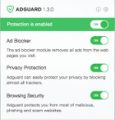What is ActivePower
According to security researchers, ActivePower is an adware application. Adware can cause problems for your Mac. Adware can display unwanted advertisements on your internet browser so that your cannot block them, redirect your web-browser to shady web-sites, and it can cause unwanted web sites to pop up on your web-browser. Adware might end up on your computer after you download and install free applications from a questionable source.
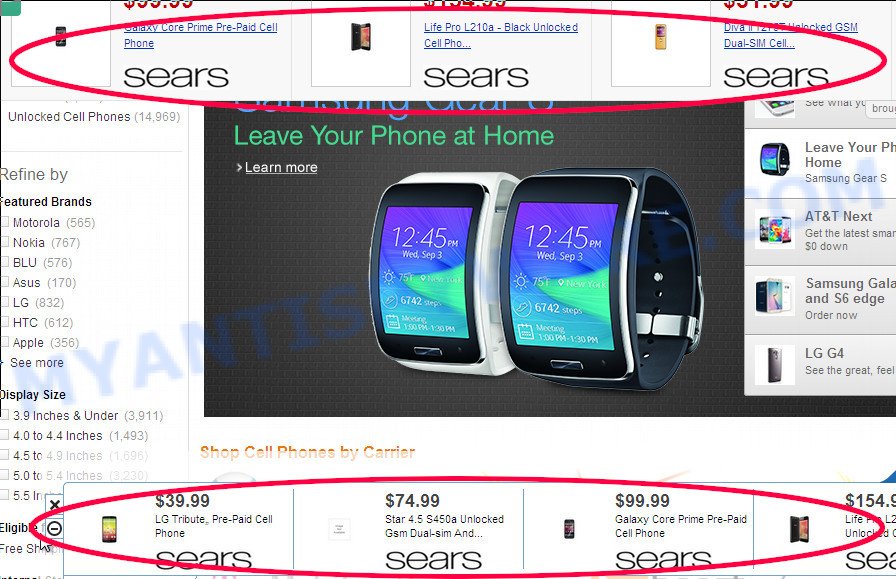
Unwanted ads
The ActivePower adware takes over your browser’s default search engine and controls what will be shown to you whenever you do a searching. Other than the search results, it also provides a large amount of annoying ads on the search page. Some of these advertisements developed to trick you into buying certain questionable products and apps. Moreover, sometimes, those ads could redirect you to misleading or malicious web pages.
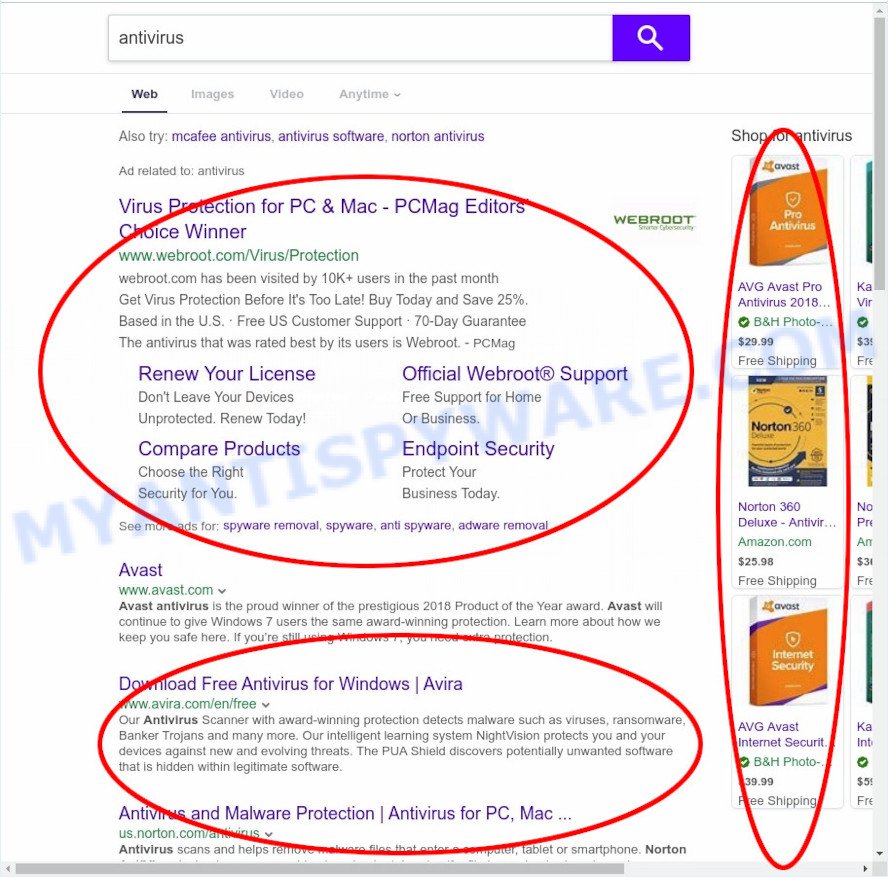
Unwanted search ads
Another reason why you need to remove the ActivePower adware is its online data-tracking activity. It be able to gather your surfing history and user information, including passwords and credit card numbers. In the future, marketing-type data about you can be transferred third party companies.
To find out how to delete ActivePower adware, we recommend to read the tutorial added to this blog post below. The instructions was created by experienced security researchers who discovered a method to get rid of the adware out of the MAC.
How does ActivePower get on your MAC system
The most common way to get adware is a freeware installer. In many cases, a user have a chance to disable all third-party software, but certain setup files are created to confuse the average users, in order to trick them into installing potentially unwanted applications and adware. Anyway, easier to prevent adware rather than clean up your MAC system after one. So, keep your internet browser updated (turn on automatic updates), use good antivirus apps, double check freeware before you start it (do a google search, scan a downloaded file with VirusTotal), avoid dubious and unknown web-sites.
Threat Summary
| Name | ActivePower |
| Type | adware software, PUP (potentially unwanted program), pop ups, popup advertisements, popup virus |
| Symptoms |
|
| Removal | ActivePower removal guide |
How to Remove ActivePower (removal instructions)
According to cyber threat analysts, ActivePower removal can be finished manually and/or automatically. These tools that are listed below will help you remove adware, harmful web-browser extensions, malware and PUPs . However, if you’re not willing to install other software to get rid of adware, then use instructions listed below to return your Mac settings to their previous states.
To remove ActivePower, execute the steps below:
- Remove unwanted profiles on Mac device
- Check the list of installed programs
- Remove ActivePower related files and folders
- Scan your Mac with MalwareBytes
- Remove ActivePower from Safari, Chrome, Firefox
- How to stay safe online
- Finish words
Remove unwanted profiles on Mac device
ActivePower can install a configuration profile on the Mac system to block changes made to the browser settings. Therefore, you need to open system preferences, find and delete the profile installed by the adware software.
Click the System Preferences icon ( ![]() ) in the Dock, or choose Apple menu (
) in the Dock, or choose Apple menu ( ![]() ) > System Preferences.
) > System Preferences.
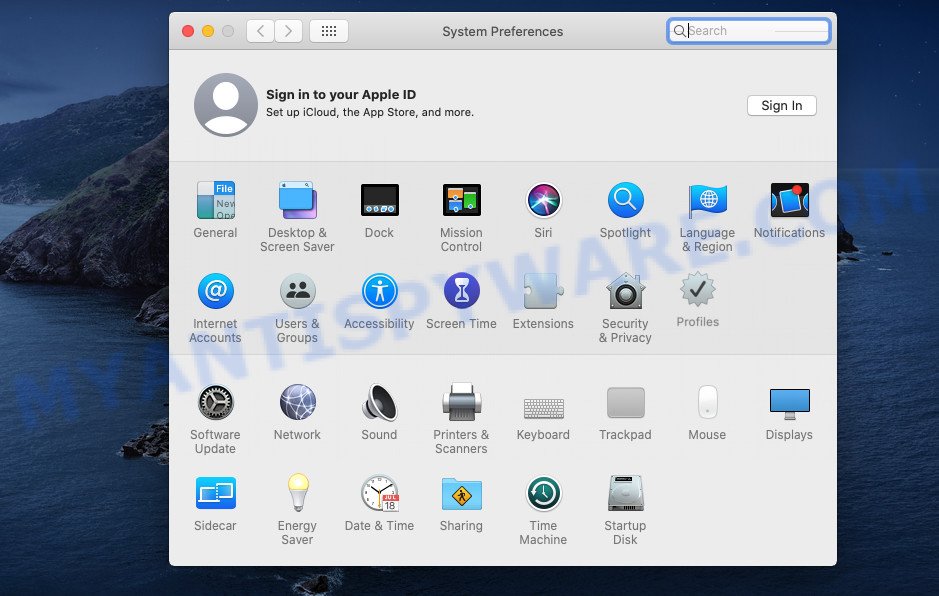
In System Preferences, click Profiles, then select a profile associated with ActivePower.
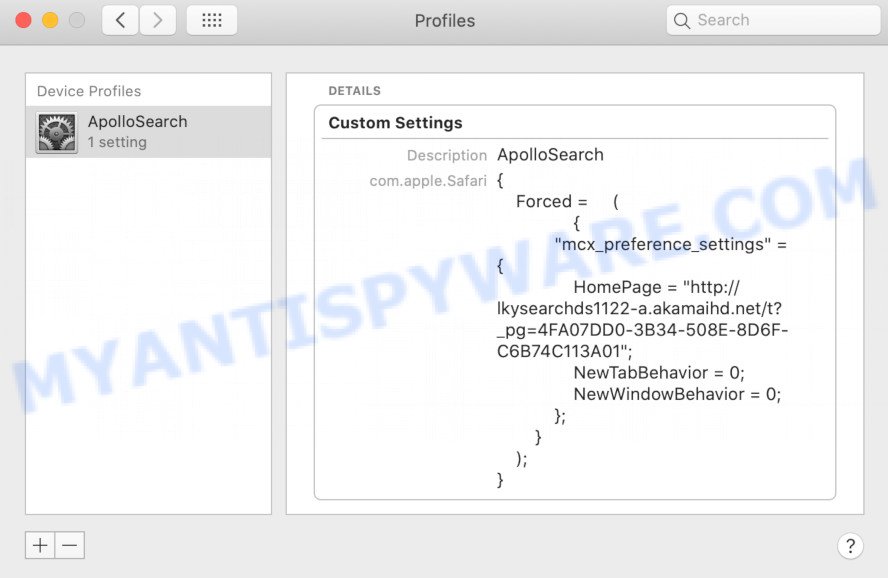
Click the minus button ( – ) located at the bottom-left of the Profiles screen to remove the profile.
Note: if you do not see Profiles in the System Preferences, that means there are no profiles installed on your Mac computer, which is normal.
Check the list of installed programs
Go to the Finder and uninstall questionable software, all applications you don’t remember installing. It’s important to pay the most attention to applications you have recently installed. If you don’t know what a program does, look for the answer on the Web.
Open Finder and click “Applications”.
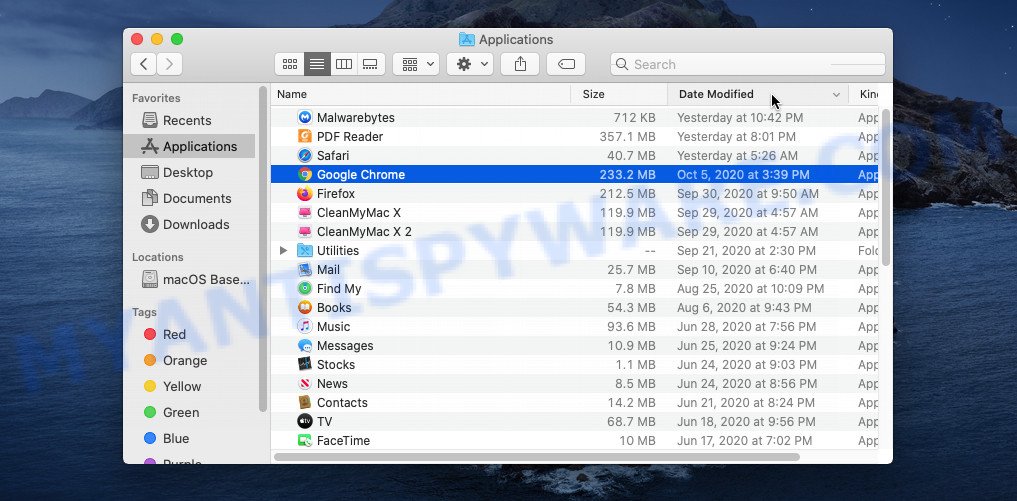
Carefully browse through the list of installed applications and delete all dubious and unknown programs.
Once you’ve found anything dubious that may be the ActivePower adware or other potentially unwanted program, then right click this program and select “Move to Trash”. Once complete, Empty Trash.
Remove ActivePower related files and folders
Now you need to try to find ActivePower related files and folders, and then delete them manually. You need to look for these files in certain directories. To quickly open them, we recommend using the “Go to Folder…” command.
Click on the Finder icon. From the menu bar, select Go and click “Go to Folder…”. As a result, a small window opens that allows you to quickly open a specific directory.

Check for ActivePower generated files in the /Library/LaunchAgents folder

In the “Go to Folder…” window, type the following text and press Go:
/Library/LaunchAgents
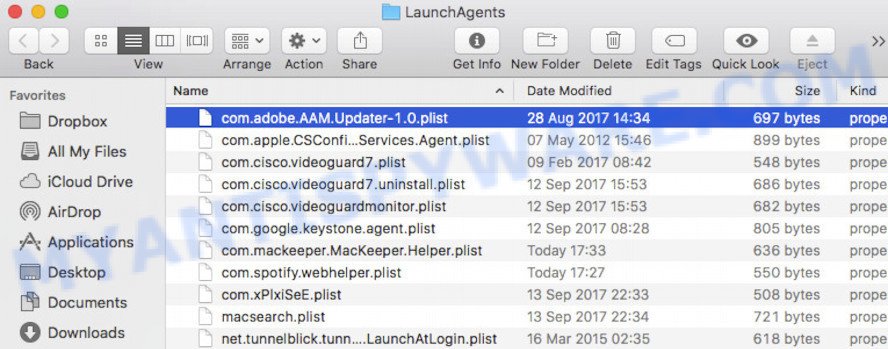
This will open the contents of the “/Library/LaunchAgents” folder. Look carefully at it and pay special attention to recently created files, as well as files that have a suspicious name. Move all suspicious files to the Trash. A few examples of files: macsearch.plist, search.plist, installapp.plist, ActivePower.plist and com.machelper.plist. Most often, PUPs, browser hijackers and adware create several files with similar names.
Check for ActivePower generated files in the /Library/Application Support folder

In the “Go to Folder…” window, type the following text and press Go:
/Library/Application Support
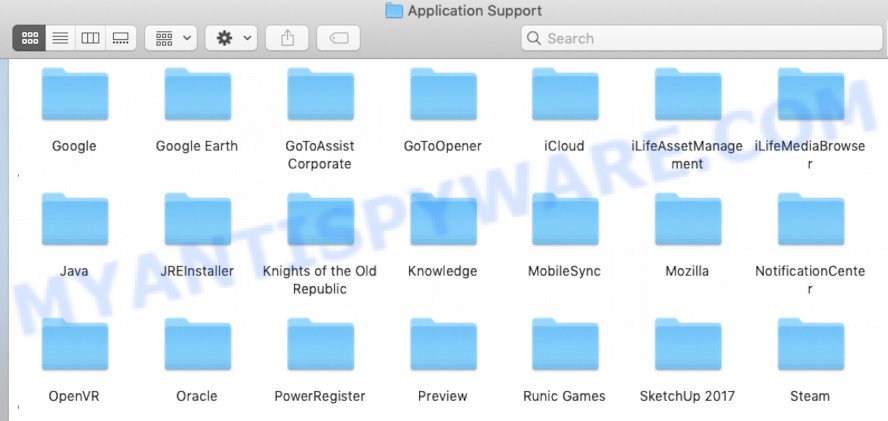
This will open the contents of the “Application Support” folder. Look carefully at its contents, pay special attention to recently added/changed folder. Move all suspicious folders to the Trash.
Check for ActivePower generated files in the “~/Library/LaunchAgents” folder

In the “Go to Folder…” window, type the following text and press Go:
~/Library/LaunchAgents

Proceed in the same way as with the “/Library/LaunchAgents” and “/Library/Application Support” folders. Look for suspicious and recently added files. Move all suspicious files to the Trash.
Check for ActivePower generated files in the /Library/LaunchDaemons folder
In the “Go to Folder…” window, type the following text and press Go:
/Library/LaunchDaemons

Carefully browse the entire list of files and pay special attention to recently created files, as well as files that have a suspicious name. Move all suspicious files to the Trash. A few examples of files to be deleted: com.search.plist, com.machelper.plist, com.ActivePower.plist, com.installapp.plist and com.macsearch.plist. In most cases, PUPs, browser hijackers and adware create several files with similar names.
Scan your Mac with MalwareBytes
Manual ActivePower removal requires some computer skills. Some files and system entries that created by the adware software can be not completely removed. We advise that run MalwareBytes AntiMalware (MBAM) to scan the Mac. Moreover, this program will allow you to remove adware, browser hijackers, toolbars and potentially unwanted programs that your MAC system can be affected too.
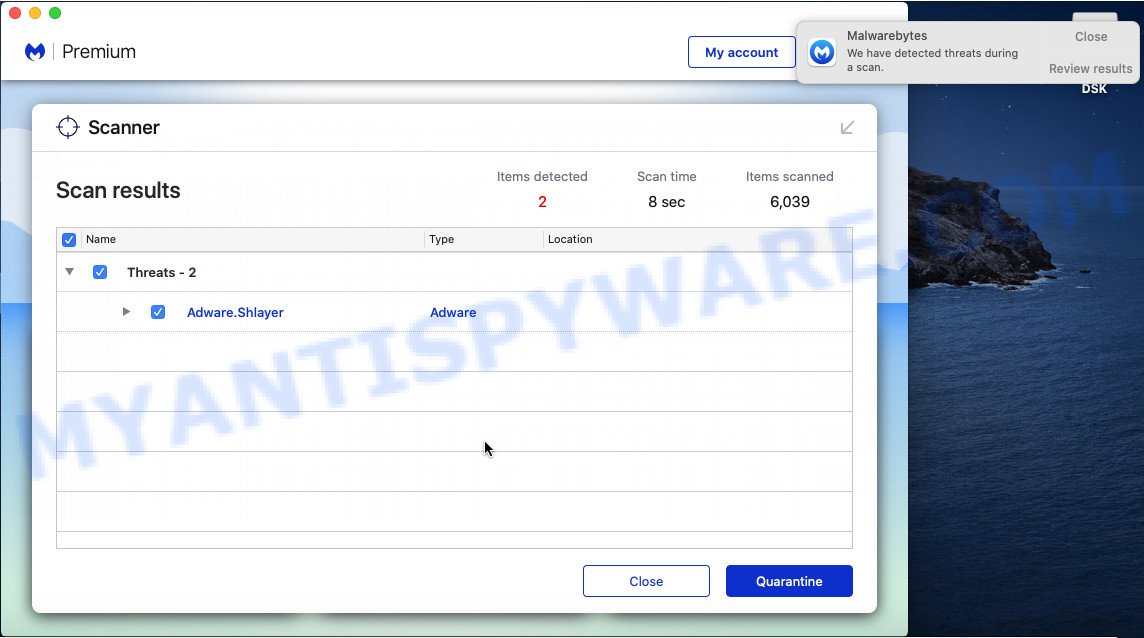
- Visit the page linked below to download MalwareBytes AntiMalware.
Malwarebytes Anti-malware (Mac)
21017 downloads
Author: Malwarebytes
Category: Security tools
Update: September 10, 2020
- Once downloading is complete, close all applications and windows on your MAC system. Open a file location. Run the downloaded file and follow the prompts.
- Click the “Scan” button to perform a system scan with this tool for the ActivePower adware software. A scan may take anywhere from 10 to 30 minutes, depending on the count of files on your Apple Mac and the speed of your machine. When a threat is found, the count of the security threats will change accordingly.
- After MalwareBytes has completed scanning your MAC system, a list of all items detected is created. Once you’ve selected what you want to remove from your Apple Mac press “Quarantine”.
Remove ActivePower from Safari, Chrome, Firefox
Remove unwanted extensions is a simple solution to remove ActivePower adware and revert back web browser’s settings that have been replaced by adware.
You can also try to get rid of ActivePower by reset Google Chrome settings. |
If you are still experiencing problems with ActivePower adware software removal, you need to reset Mozilla Firefox browser. |
|
How to stay safe online
To put it simply, you need to use an ad blocker tool (AdGuard, for example). It’ll block and protect you from malicious web-sites, unwanted advertisements and pop-ups. To be able to do that, the adblocker application uses a list of filters. Each filter is a rule that describes a malicious website, an advertising content, a banner and others. The ad blocker application automatically uses these filters, depending on the webpages you are visiting.
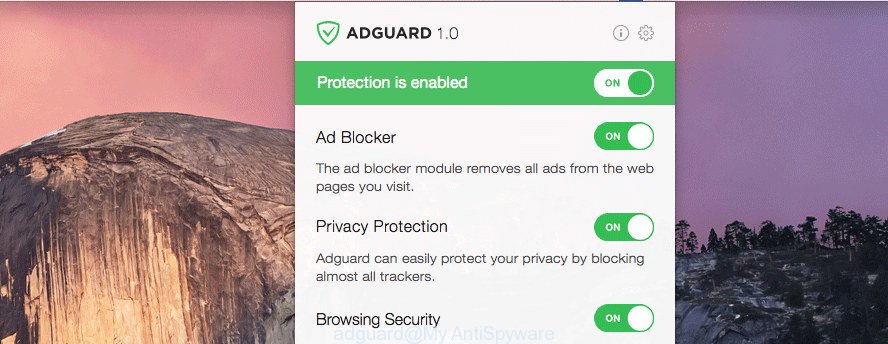
Installing the AdGuard is simple. First you’ll need to download AdGuard by clicking on the following link.
3779 downloads
Author: © Adguard
Category: Security tools
Update: January 17, 2018
When the download is done, run the downloaded file. You will see the “Setup Wizard” screen. Follow the prompts.
Each time, when you run your MAC, AdGuard will launch automatically and stop intrusive pop-up advertisements, block malicious and misleading webpages.
Finish words
After completing the instructions above, your Apple Mac should be clean from ActivePower adware and other malware. The Chrome, Mozilla Firefox and Safari will no longer redirect you to various unwanyed webpages and online ads. Unfortunately, if the guidance does not help you, then you have caught a new adware software, and then the best way – ask for help here.

